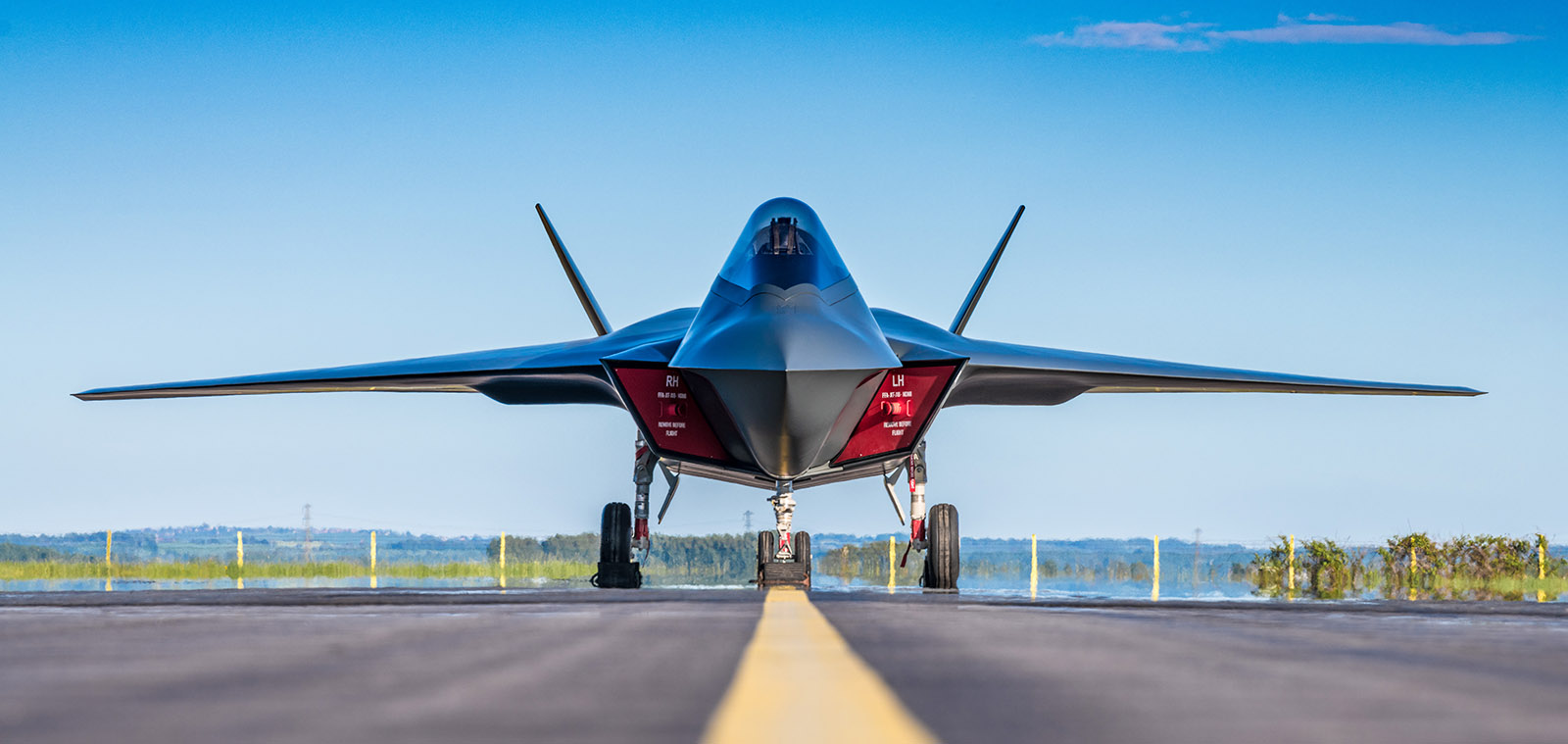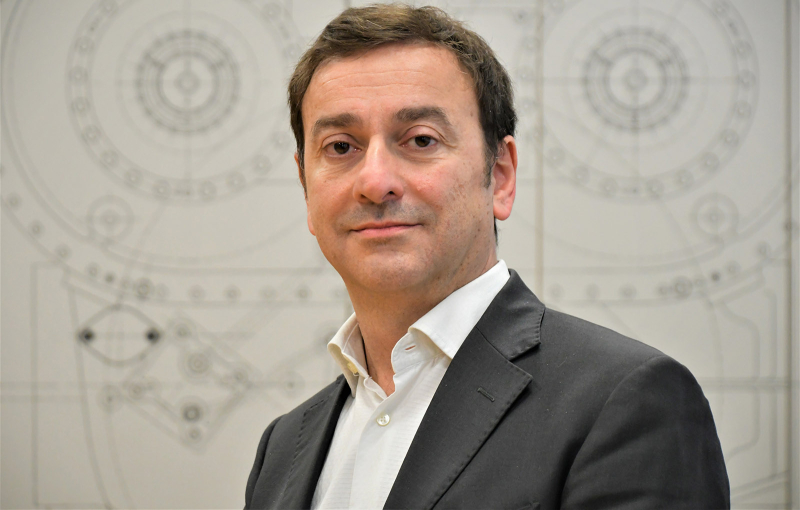The System of Systems
title
The System of Systemsshort_title
author_rel
author
Alberto Fronticelliis_scheduled
Nopublish_date
summary
The new program launched to develop a system of systems that will operate in a multi-domain scenario, paving the way for a new generation of military jets that will take off as of 2035.
text
The sixth generation of aircraft is looming on the horizon of European airborne defense with the aim to go beyond the fourth (represented by fighters such as the Eurofighter) and the fifth (Lockheed Martin's F-35), especially due to its electronic intelligence and novel technology. The GCAP (acronym stands for Global Combat Air Programme) program sees’s the leading aerospace companies of Britain, Italy and Japan working together: BAE Systems, Leonardo and Mitsubishi Heavy Industries as national Lead System Integrators; Rolls Royce, Avio Aero and IHI Corporation for the propulsion systems.
The new platform will in fact be much more than a fighter jet: it will be able to communicate dynamically and in coordination with other systems, additional platforms, such as a series of remotely piloted aircraft. For the GCAP system - about which, as is typical in this concept stage, much has yet to be revealed - Avio Aero is studying several innovative solutions to approach the new technology introduction (NTI) phase that, from 2026, will require the maturation and demonstration of the fledgling technologies.
Technologies that will make the flight experience of this machine unique, as they will offer more benefits than military aviation "legends" that also derived their resounding success from Avio Aero's Italian engineering, engines like the EJ200 or RB199. Massimo Castorina, Avio Aero's Marketing and Business Development Leader, an aerospace engineer with more than 20 years experience in major European aeronautics companies, is well aware of the challenge before him and his colleagues. But he is also confident of the skills deployed to bring the sixth-generation engine to life.
Why is the platform on which the GCAP will be based called a “generation VI aircraft," and how will it differ from the Eurofighter, now a primary platform for European air forces and beyond?
"Here it is necessary to have a brief look at the historical background: fighters are segmented according to generations to account for their technological and historical evolutions over time. It starts with the first jets used at the end of World War II - like the F-80 with basic avionics, no radar or electronic protective countermeasures, no afterburner and subsonics. The second generation could already rely on higher speed, radar and geo-guided controls. The third, on the other hand, introduced 'multi-role' fighters, capable of performing both defense and attack missions (such as the F-105). With the fourth generation, we cover a time-frame that roughly goes from the 1970s to 2000 and, while the multi-role requirement remained fundamental, the need for improved aircraft maneuverability was added. In particular, aircraft that entered service between 1990 and 2000 are referred to as ‘Generation 4.5’ by virtue of the new technological developments brought by advanced avionics and lower in-flight observability. Finally, fifth-generation aircraft are the latest available on the market: they introduced integrated avionics systems that provided pilots with a complete picture of the battle space and the use of 'invisibility' techniques, so-called stealth capabilities. The typical example is the F-35. And so, we came to the development of the 6th generation weapon system, which is necessary to deal with evolving threats, warfare scenarios and the renewal of the Eurofighter fleet".
This program is often called a "system of systems”. What does that mean?
"It is referred to as a 'system of systems' because GCAP is made up of a main platform (i.e. the fighter) and a fleet of other airborne systems (called Adjuncts, including unmanned aircraft), on land and at sea, which communicate with each other in real time thanks to a network based on a dedicated cloud architecture, artificial intelligence (AI) and powerful next-generation datalinks. In fact, when talking about the evolution of the operational scenario, one of the key elements to take into consideration is the ability to obtain information in real time and with the widest possible range. This allows quick decisions, possibly securing an advantage over the enemy, i.e. what is known as ‘decision superiority’. So, the main platform itself will have highly innovative features compared to previous generations in terms of weapon systems, low observability, and flight performance (maneuverability, power, speed). Technological and digital innovation, which likewise will be an advantage for better collaboration nationally and internationally among different industrial entities, fostering faster development that is less costly in economic terms and more effective in terms of performance. It is important to stress that the GCAP-related effort is not the only one currently underway in the development of sixth-generation weapon systems: the United States, a consortium between Germany, France, and Spain, just like Russia or Japan are all pursuing similar projects”.
"We have to imagine an even more high-performance propulsion system than that of the Eurofighter Typhoon, capable of providing more electrical power and dissipating heat without leaving traces detectable by enemy radar"
How do you envision propulsion for this main platform at Avio Aero, drawing on the experience in legacy programs such as Tornado and Typhoon?
"The propulsion of the mother fighter aircraft on which the GCAP will be based will benefit from the technological evolutions which took place in recent years and those we will develop in the coming years, thus representing a major leap forward in the way we define a military engine. We have to imagine an even more high-performance propulsion system than that of the Eurofighter Typhoon, capable of providing more electrical power and dissipating heat without leaving traces detectable by enemy radar. There will be generators and energy storage and distribution systems. It will be an extremely efficient system, capable of working at very high temperatures and making extensive use of new materials, digital technologies and our additive technology (which will help in design as well as weight). The combination of propulsion and power in a single element, as well as the need for low observability, will make it more necessary than ever to cooperate very closely with the aircraft engineers to optimize integration. From an industrial point of view, we are happy to be able to continue our path of developing cutting-edge military propulsion systems together with Rolls Royce. The relationship developed with British colleagues in the EJ200 program is a solid basis for cooperation and a guarantee of success. In addition, the opportunity to have new partners such as Rolls Royce and IHI brings added value and different points of view. However, the partnership structure is not yet fully defined; we are working to secure the best international expertise on this project".
How do you interpret the operational mission of this future fighter and how is Avio Aero interpreting customer requirements?
"Although we are still at a very preliminary stage in the development of this system, our country has been very clear in defining its goals on the program. This new fighter jet will have to provide an operational advantage; therefore it is necessary for our Defense to be able to modify the platform as it sees fit according to its needs, regardless of other nations. It means that our MoD (Ministry of Defense, ed.) is asking all Italian industries, each for their expertise, to contribute qualified participation that will allow us to fully understand the system, modify it and possibly improve it according to the specific needs of our armed forces. It is therefore asking Avio Aero to be an engineer and to do so relying solely on its expertise established over more than 110 years. To do so, we need to rely on our Italian supply chain, made up of small and medium-sized companies and collaborations with research centers, thus also guaranteeing technological, economic and labor return to the territory. It is with great satisfaction that we participate in an initiative that involves our country’s government and industrial partners in a very close teamwork; working in a coordinated way with our country system gives additional strength to the proposals of individual industrial players in confrontation with international partners."
What is the value proposition that Avio Aero will put up for this program?
"The GCAP program will bring with it about 40 years of new technological development compared to the Eurofighter and an unprecedented evolution in the way the air weapon system is conceived, helping to further improve our country's level of security and responsiveness, suitable for challenging and evolving geopolitical scenarios. For this reason, we will first go through a concept and validation phase in which the most suitable technologies will be selected; this will then be followed by the actual development phase, in which the concept will be confirmed. This will lead to entry into service from 2035 with the capacity and flexibility for further development iterations (spiral development) that are flexible to changes in scenario. In line with our country's ambitions, and as a national champion in the propulsion field, we believe that we participate in GCAP on an equal footing with other engineers throughout the life cycle of the program, from the NTI phase to operational support following entry into service. Today, the focus is mainly on participation in the NTI phase, which is very sensitive because it will outline some future directions. We are convinced that we have in our background all the necessary elements to support the ambition of Defense, helping to define the technologies needed for the product and the improvement of the product itself."
Images of the systems in page are courtesy of Leonardo, credits © 2021 BAE Systems.
category
landing_landscape_hero

image_hero_mobile_web
image_hero_mobile
image_square
video
video_article_is_published
Novideo_slider_is_published
Nods_summary
FCAS-Tempest is a program launched in 2018 to develop a system of systems that will operate in a multi-domain scenario, paving the way for a new generation of military jets that will take off as of 2035.
metadata
Title:
Description:
Keywords:
Use in sitemap: No
Change frequency: always
Priority: 0






